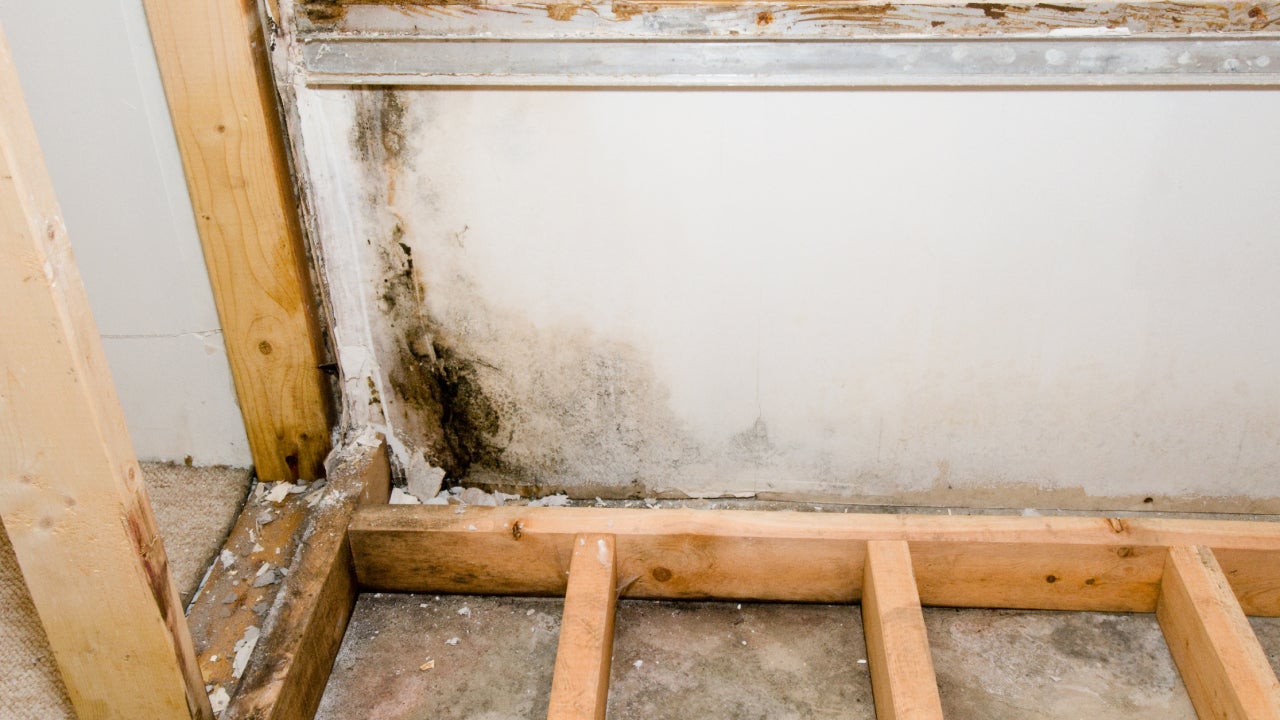Does homeowners insurance cover trampolines?




Trampolines can be a great deal of fun, but they can also represent some significant risks. According to the Consumer Product Safety Commission, Americans experienced over 300,000 trampoline-related injuries in 2018, with at least 90 percent of these injuries occurring to children. In fact, the American Academy of Pediatrics has recommended against home trampolines for some time. Still, these home entertainment items have maintained their popularity with children and families across the states.
If you’re going to own a trampoline, especially if you have children, learning how and when these objects are and aren’t covered may go a long way toward helping you prevent a financial disaster. Let Bankrate walk you through the connection between trampolines and homeowners insurance.
Key takeaways
- Insurance carriers often exclude trampolines from coverage, and those that don’t tend to require a range of added safety features to qualify for coverage.
- When covered, trampolines are generally considered personal property and result in a higher premium.
- Trampolines are considered to be a high-risk item associated with a significantly increased risk of injuries.
Does homeowners insurance cover trampolines?
Can you file a claim to cover the medical costs if someone is injured on your trampoline? Or if the trampoline is damaged in a storm, will your policy pay for repair or a replacement? Whether or not your homeowners insurance policy covers trampolines depends entirely on your insurance provider and its claim experience with trampoline losses.
Usually, insurance companies approach trampoline coverage in one of three ways:
- No exclusions: If your policy allows you to have a trampoline with no exclusions, that means your home insurance coverage will most likely step in when you need it. Your liability coverage would pay for injuries if a guest is hurt while jumping on the trampoline, for example, or if high winds blow it into your neighbor’s house and you are determined liable for not properly anchoring it. However, you still should confirm you have coverage for a trampoline before setting it up in your yard.
- Coverage under specific circumstances: Many insurers will only offer trampoline insurance coverage when the homeowner takes specific precautions, like installing a high fence around the trampoline’s perimeter or putting something softer than concrete (e.g., mulch or sand) around it. Many insurance companies consider trampolines attractive nuisances, which means they are likely to attract a child who could potentially injure themselves there. As a result, to get financial protection from your home insurance policy, you may need to implement certain safety requirements.
- No coverage: Because of the increased risk these backyard additions present, many companies specifically exclude coverage for trampolines and include the exclusion information in your policy. Not only does that mean any incidents that occur on or because of your trampoline will not be covered, but it may also mean your insurance provider will refuse to renew your policy as long as you have the trampoline. Insurance experts strongly recommend if you can’t obtain coverage, don’t purchase a trampoline.
While you might be tempted to simply not tell your insurance provider about your trampoline, it is best to be upfront about it. Misrepresentation may cause a provider to retroactively cancel a policy or deny a claim when it’s filed.
When are trampolines covered?
If your policy allows trampoline coverage, whether due to a lack of related exclusions or because you met the specified safety and installation requirements, there are a handful of situations where homeowners insurance covers trampolines:
Storms and covered perils
If your trampoline is destroyed because of a hurricane, tornado, lightning strike, hail storm fire or other covered peril, your personal property coverage will likely pay to replace it. Keep in mind that your home insurance deductible will apply, though, so your trampoline will need to cost more than your deductible, or you’ll have to have other damage from the same storm.
If a strong wind picks up your trampoline and smashes it into your neighbor’s home, fence or car, your home insurance coverage may step in to cover damages. If you were found negligible for not properly anchoring the trampoline, your liability insurance may cover the damages (up to your policy limits). But if you had the trampoline anchored and strong winds carried it off during a severe weather event, the incident may be classified by what insurers call an “Act of God,” meaning you could not have prevented it and may not be held liable for the loss. In that case, your neighbor’s home insurance should step in to pay for their damages.
Trampoline theft or damage
Most likely, your personal property coverage will provide coverage to your trampoline if the loss occurs due to vandalism or outright theft, assuming your insurance policy includes coverage amounts that account for the trampoline. Your deductible would also apply.
Trampoline injuries
Who pays if someone gets hurt? Of all the trampoline and homeowners insurance questions, this is probably the most common — and for good reason.
Unfortunately, if any of your family members gets injured on the trampoline, you will likely need to turn to your own health insurance to pay for resulting medical care. But if guests get hurt while jumping around, the medical payments to others or liability coverage included in your home insurance policy may step in to help with their medical bills. In the event the injured party decides to pursue a lawsuit, your liability coverage may also help with legal fees and court costs, including any settlement.
How much does trampoline insurance cost?
Trampoline insurance — as a standalone product — does not exist. But homeowners can still get insurance coverage for trampolines through their homeowners insurance, assuming they choose a provider that does not specifically exclude trampolines. Remember, in some cases, you might need to meet certain requirements (e.g., put up a perimeter net) to get coverage through your standard home policy. And many insurers see trampolines as such a high-risk item that they simply exclude coverage.
If trampolines are covered at all, they could be seen as a much higher risk to an insurance company, meaning your premiums may increase. Insurers may implement these increases to cover the added risk of injury or property damage related to having a trampoline. Of those two risks, the risk of bodily injury may be the most significant. If your insurance company’s policy excludes trampolines, you might want to shop around to other companies.
Does having a trampoline affect homeowners insurance rates?
Having a trampoline on your property could impact your home insurance rates, depending on your insurer. Some providers could raise your annual premium to cover the added liability a trampoline brings. Before buying this backyard addition, you may want to ask your insurance provider how much additional premium you will need to pay for a trampoline.
For those who want to avoid affecting their home insurance policy, but still want coverage for their trampoline, you may have success by taking out a personal umbrella policy. This likely wouldn’t cover any damage to the trampoline itself, but instead may cover costs related to people becoming injured on or by the trampoline.
What are the risks of not telling your insurance company about a trampoline?
Several potential risks are associated with not telling your insurance company about a trampoline on your property. In general, these risks revolve around having a higher probability of having to pay for expenses — that your home insurance policy might have otherwise covered — out of pocket.
- Risk of claim denial or policy cancellation: If a claim arises from a trampoline-related injury or if you are found liable for an injury caused by a trampoline that you did not disclose to your homeowners insurance company, your insurer may choose to cancel your policy or not provide coverage for the claim.
- Risk of out-of-pocket expenses: The frequency and severity of trampoline-related injuries are high, but most of the injuries sustained by trampoline use are sprains and strains to the arms, legs and feet. However, trampolines can also result in more severe injuries, including skull fractures and spinal cord injuries. The cost of medical care — especially for serious injuries — can be substantial.
- Risk of lawsuit: The cost of medical care is typically a significant expense in any personal injury case, and these expenses can add up quickly, meaning that even a minor injury could lead to a large claim against you or your homeowners insurance policy. If you are sued by someone else for injuries that occurred on your trampoline, you would likely be responsible for whatever amount you are found liable for. That’s why disclosing your trampoline to your homeowners insurance company is critical. If your insurer does not cover a claim relating to your trampoline, you would have to pay any settlement out of your own pocket, which could be financially devastating.
How can homeowners avoid trampoline claims altogether?
The only way to absolutely avoid the risks around trampolines is to avoid the trampolines themselves. If you are going to keep one, though, you can follow several basic safety guidelines that may help you get trampoline coverage and reduce the risk of injuries. Home insurance carrier Nationwide curated an in-depth list of safety precautions for trampolines. The list below is based on their suggestions:
- Implement age requirements of 5 or older.
- Always have adult supervision.
- Limit usage to one person at a time.
- Don’t jump from the trampoline onto the ground or other areas.
- Control and limit access to the trampoline.
- Keep the trampoline away from concrete and other hard sites.
- Maintain a safe fall zone around the trampoline, clear of debris and with soft ground.
- Use a round instead of a square trampoline.
- Put a safety net up around the trampoline.
- Cover exposed trampoline parts, especially hooks and springs, in safety pads.
Having a trampoline can be fun, but risky. Yet with some basic precautions and foresight, you can reduce the risk without impinging on the fun. If you want to own a trampoline and avoid claims, consider utilizing the above safety tips and speak with your insurance agent to see if they have further advice.
Frequently asked questions
You may also like

Does homeowners insurance cover renovations?

Does your homeowners insurance go up after a claim?

When does homeowners insurance cover mold?

Does homeowners insurance cover volcanic eruptions?
